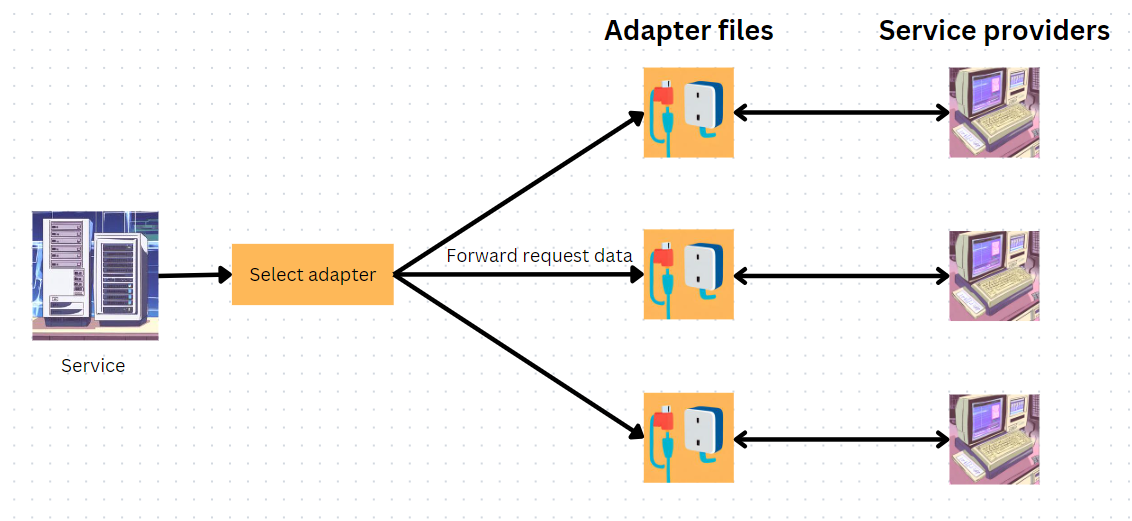Harnessing the Adapter Pattern for Flexibility
 Shanmuga Priyan
Shanmuga Priyan
Introduction
Discover the Adapter pattern: a structural design pattern in software that makes things easy. It acts like a translator, helping different parts talk to each other smoothly. Join in as we see how this pattern makes software flexible.
Understanding the Challenge
When integrating with third-party service providers, the overall process may seem consistent,but the tricky part is in the little differences. These providers often differ in API structures, authentication methods, and data formats.We need a custom approach for each service to make sure our system can smoothly handle the unique details of each one. This way, we can easily work with different services and adapt to their specific needs. This blog is based on my experience encountering a similar challenge while developing a microservice that interacts with multiple service providers. Let's dive into the details.
Adapter Pattern to the Rescue
The Adapter pattern comes to the rescue by providing a solution that allows us to seamlessly work with multiple service providers while maintaining a unified entry point. Essentially, the Adapter pattern acts as a bridge between the microservice and each service provider, translating their unique requirements into a standardized format.
Consider this example: Authentication methods vary among service providers. While one may require generating a session key, another might prefer validating with provided API keys. Despite these differences, the core remains authentication, determining whether the user is authenticated or not. To manage this diversity, each service provider has its dedicated adapter, encapsulating all the authentication logic specific to that provider.

Advantages of the Adapter Pattern:
Isolation of Provider-Specific Logic:
Each service provider gets its dedicated adapter, containing all the logic specific to that provider.
This isolation simplifies maintenance, allowing updates or changes to a particular provider's interface without affecting the entire system.
Modular and Scalable Architecture:
- The modular nature of the Adapter pattern promotes scalability. New service providers can be added without disrupting the existing codebase.
Enhanced Code Readability:
By encapsulating the intricacies of each provider within its adapter, the overall codebase becomes more readable and maintainable.
Developers can focus on understanding and improving specific adapters without being overwhelmed by the complexity of the entire system.
Conclusion
In summary, the Adapter pattern proves invaluable in simplifying diverse interactions. By tailoring dedicated adapters for specific needs, it streamlines development, ensuring flexibility and scalability. This versatile approach equips us to efficiently navigate complexities, making the Adapter pattern an essential tool for creating adaptable systems across various scenarios.
Subscribe to my newsletter
Read articles from Shanmuga Priyan directly inside your inbox. Subscribe to the newsletter, and don't miss out.
Written by
